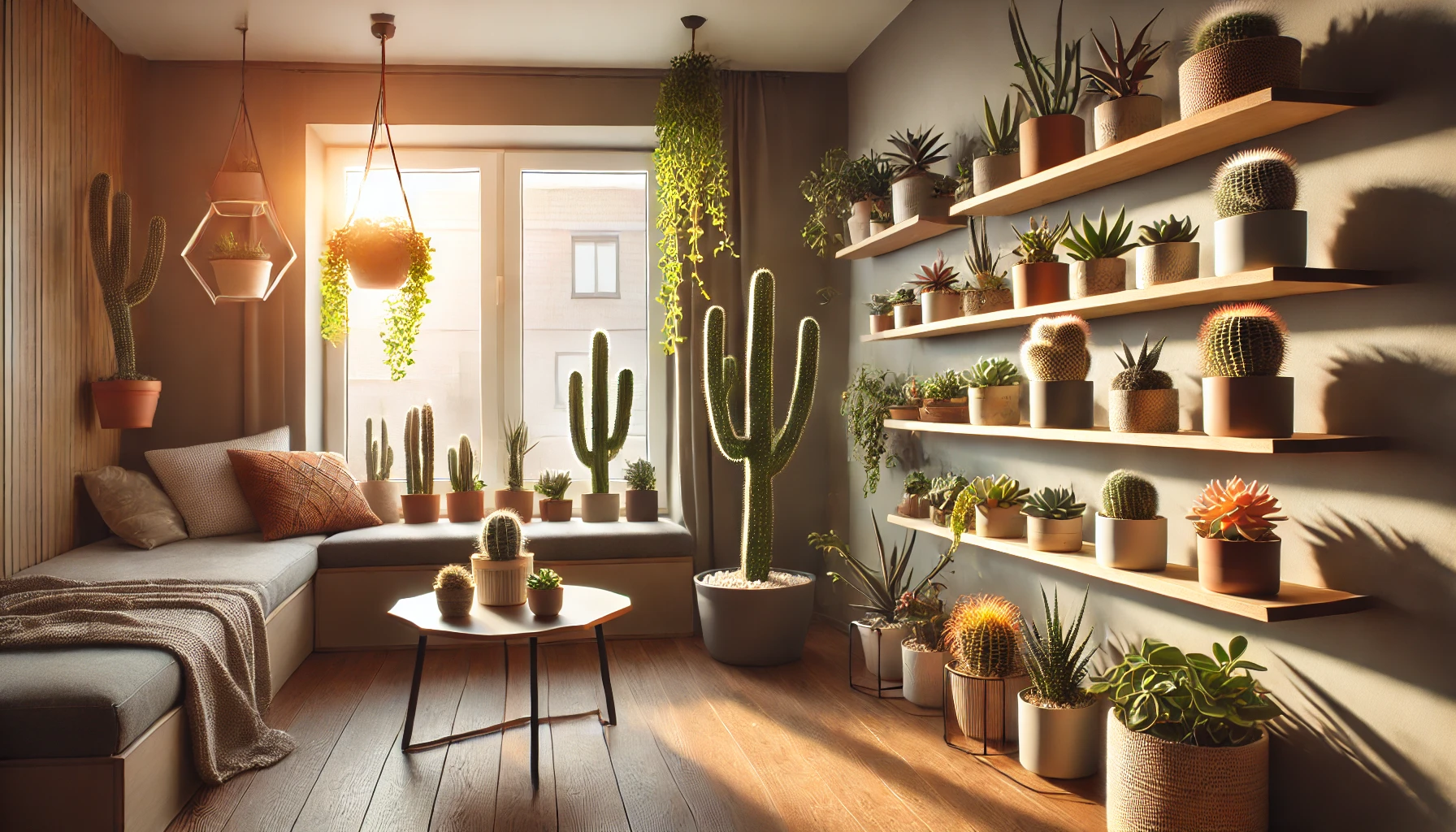Bringing a touch of nature into your home doesn’t require a backyard or even a balcony. In fact, small apartments can become lush green sanctuaries when decorated with exotic cacti and succulents. These low-maintenance, space-saving plants are perfect for anyone who wants a bit of greenery without sacrificing precious square footage.
In this article, you’ll learn everything you need to know about successfully growing exotic cacti and succulents in a small apartment environment. From choosing the right species to creative placement ideas and essential care tips — we’ve got you covered.
Why Choose Cacti and Succulents for Small Spaces?
Cacti and succulents are ideal plants for apartment dwellers. Their compact size, drought resistance, and stunning shapes make them excellent decorative additions to any home. Here are a few reasons why they’re so popular:
- Minimal water requirements
- Variety of colors and textures
- Low light tolerance (some species)
- Easy propagation
- Compact root systems
Plus, many exotic species offer unique appearances that instantly upgrade your interior design game.
Best Exotic Cacti and Succulents for Apartment Living
Not all succulents are equal when it comes to apartment life. Some thrive better in limited light and air circulation. Below are a few exotic yet suitable plants:
- Haworthia cooperi – Known for its glassy, translucent leaves
- Echeveria ‘Lola’ – A pastel-colored rosette beauty
- Astrophytum myriostigma – Star-shaped cactus with minimal spines
- Stapelia gigantea – A succulent that produces stunning starfish-shaped flowers
- Gasteria – Grows well in low light and tight spaces
- Lithops – “Living stones” that stay small and fascinating to observe
Always look for dwarf varieties or slow-growing species to better accommodate apartment spaces.
Understanding the Light Needs Indoors
Many people mistakenly believe that all succulents and cacti need direct, intense sunlight. While that’s true for some species, many exotic varieties actually prefer indirect light or filtered sunlight. Here’s how to adapt your apartment’s light conditions:
- South or east-facing windows work best for natural light.
- Use sheer curtains to soften intense light.
- For darker apartments, invest in a grow light with a full spectrum LED bulb.
- Rotate plants weekly to ensure even growth.
If your plant starts stretching (etiolation), it’s a sign that it’s not getting enough light.
Choosing the Right Containers and Soil
Your choice of containers and soil will directly affect your plant’s health. For small apartments, aesthetic and functional containers are key.
Container Tips:
- Always pick pots with drainage holes to avoid root rot.
- Use ceramic or terra cotta pots to help with moisture control.
- Opt for smaller pots to prevent overwatering and to save space.
Soil Tips:
- Use a well-draining cactus mix or create your own using potting soil, perlite, and sand.
- Add a thin layer of gravel or pumice at the bottom of pots for extra drainage.
Watering Essentials: Less Is More
Overwatering is the most common mistake with cacti and succulents. These plants are built to survive droughts — not daily watering. Follow these simple rules:
- Let the soil dry out completely between waterings.
- In warmer months, water every 10 to 14 days.
- In winter, reduce watering to once a month or less.
- Always check the moisture with your finger or a soil moisture meter.
Never let your pots sit in standing water.
Humidity and Temperature: Finding the Balance
Cacti and succulents don’t love high humidity, but some exotic species can tolerate a bit more moisture in the air. Here’s how to create an ideal indoor environment:
- Maintain temperatures between 65°F to 80°F (18°C to 27°C).
- Avoid placing plants near heaters or AC vents.
- If your home is too humid, use a dehumidifier or add gravel trays to increase air circulation.
- Grouping plants together can help maintain microclimates with stable humidity.
Creative Placement Ideas in Small Apartments
When space is tight, creativity becomes your best friend. Here are smart and stylish ways to display your exotic cacti and succulents:
- Hanging planters near windows
- Wall-mounted shelves to save floor space
- Tiered plant stands in corners
- Miniature dish gardens on coffee tables
- Bathroom shelves for humidity-tolerant species
- Bookshelves with south-facing exposure
Use planters that match your interior theme — modern, rustic, minimalist, or boho.
Pest Prevention in Indoor Spaces
Indoor plants are not immune to pests, even succulents. Watch out for:
- Mealybugs – small white cotton-like pests
- Spider mites – tiny red or yellow dots and fine webbing
- Fungus gnats – tiny flying insects near wet soil
Natural Remedies:
- Use neem oil or a mild insecticidal soap
- Keep the area clean and dry
- Use sticky traps if needed
- Always quarantine new plants before adding them to your space
Propagation Tips for More Plants Without More Space
The great thing about succulents and cacti is that you can multiply them with ease. Here’s how to propagate without needing a garden:
- Leaf cuttings: Remove a healthy leaf, let it callous for a few days, then place it on dry soil.
- Offsets (pups): Gently pull or cut them from the mother plant and repot.
- Stem cuttings: Especially for trailing or tall species. Allow it to dry before planting.
Propagation is a fun and cost-effective way to expand your indoor garden.
Final Thoughts: Green Luxury in Compact Living
Living in a small apartment doesn’t mean giving up on greenery. Exotic cacti and succulents prove that even the most compact spaces can host an impressive collection of plants. With the right care, a little creativity, and the willingness to observe your plant’s needs, you’ll soon enjoy a mini desert oasis or jungle nook right in your living room.
Not only will your space look more vibrant, but you’ll also enjoy the wellness benefits of having plants around — from cleaner air to reduced stress.
